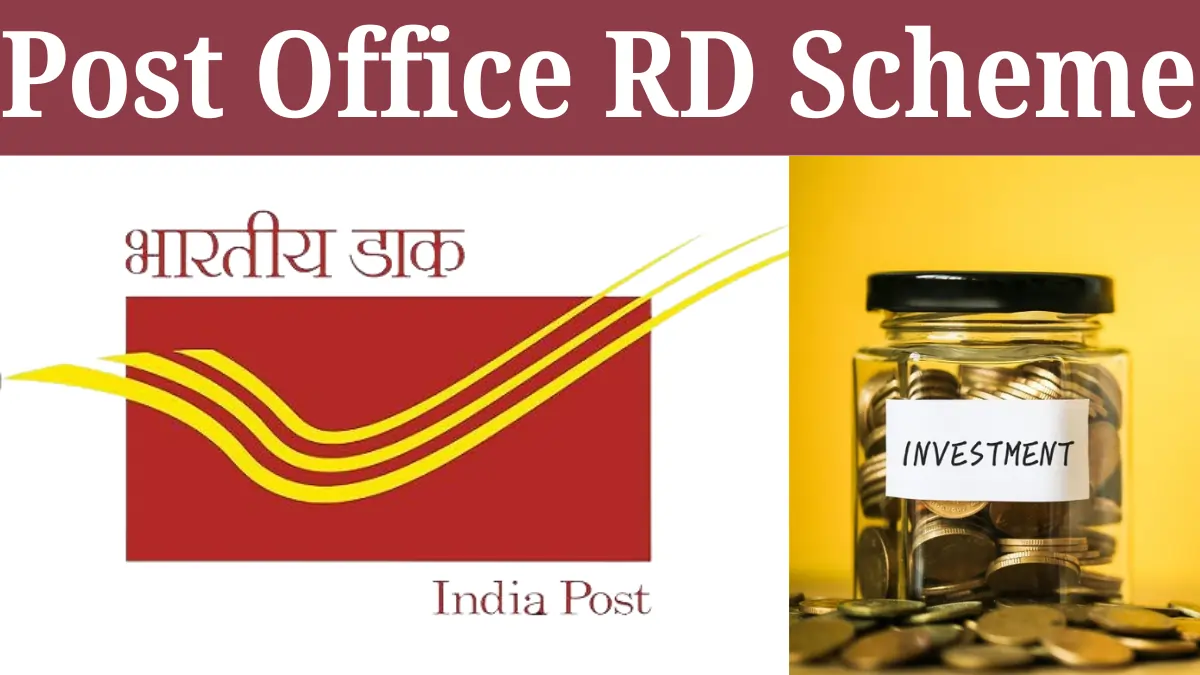The Post Office Recurring Deposit (RD) Scheme is one of the most popular savings options offered by the post office. Many people have already heard about it, and you might have come across various explanations. However, this article will give you all the information you need about the RD Scheme in a simple, clear way. We’ll cover the latest interest rates, updated rules, and the unique benefits of this plan.
Types of Post Office Deposit Schemes
The post office offers two main types of deposit schemes. One type requires a one-time lump sum deposit, while the other requires monthly contributions. Out of these, the monthly schemes include the Post Office RD, Public Provident Fund (PPF), Sukanya Samriddhi Yojana, and Postal Life Insurance. Among these, the RD scheme is a standout option for flexible monthly savings, especially for those who want to avoid long-term commitments like the 15-year lock-in of PPF.
Quarterly Compounding Benefit in RD Scheme
One key benefit of the Post Office RD Scheme is that it offers quarterly compounding of interest, unlike the PPF, which compounds annually. If you’re looking for a savings plan that provides interest returns every three months, the RD Scheme is an excellent choice. This section will explain the current interest rates and show how much you can expect to earn based on your monthly contributions.
Account Details: Who Can Open an RD Account?
Anyone can open an RD account in their name or jointly with up to two other people. Minors can also have RD accounts managed by a parent or guardian. There’s no restriction on the number of RD accounts you can open, making it a highly flexible option for different savings goals. The minimum deposit is Rs. 100 per month, with no upper limit.
Advance Deposits and Rebate Benefits
The RD Scheme offers an attractive rebate for advance deposits. If you deposit at least six months’ worth of installments upfront, you get a 10% rebate. For example, if your monthly installment is Rs. 1,000, you would save Rs. 100. For 12 months of advance payments, the rebate increases to 40%, allowing a Rs. 400 saving on a Rs. 1,000 installment.
Loan Facility Against RD Account
One significant advantage of the RD Scheme is its loan facility, available after one year. You can borrow up to 50% of the balance in your RD account, with an interest rate typically 2% higher than the RD interest rate. This facility adds flexibility and can be useful in emergencies, making the RD scheme more versatile than many other fixed savings plans.
Account Closure and Withdrawal Options
If you wish to close your RD account early, keep in mind that you’ll only receive simple savings interest if you close the account within three years. For accounts held for five years, you have the option to withdraw or extend the account for another five years. In this extended period, monthly deposits are optional, though interest will continue to accrue on the existing balance.
Long-Term Flexibility and Reliability
The Post Office RD Scheme stands out for its flexibility and reliable returns with quarterly compounding. This makes it ideal for anyone seeking a disciplined savings plan with periodic returns. By understanding the scheme’s rules and benefits, you can make an informed decision that aligns with your financial goals.
Also Read: New Giant SUV Launched: A Powerful Combination of Luxury and Performance at Tata Safari’s Price
